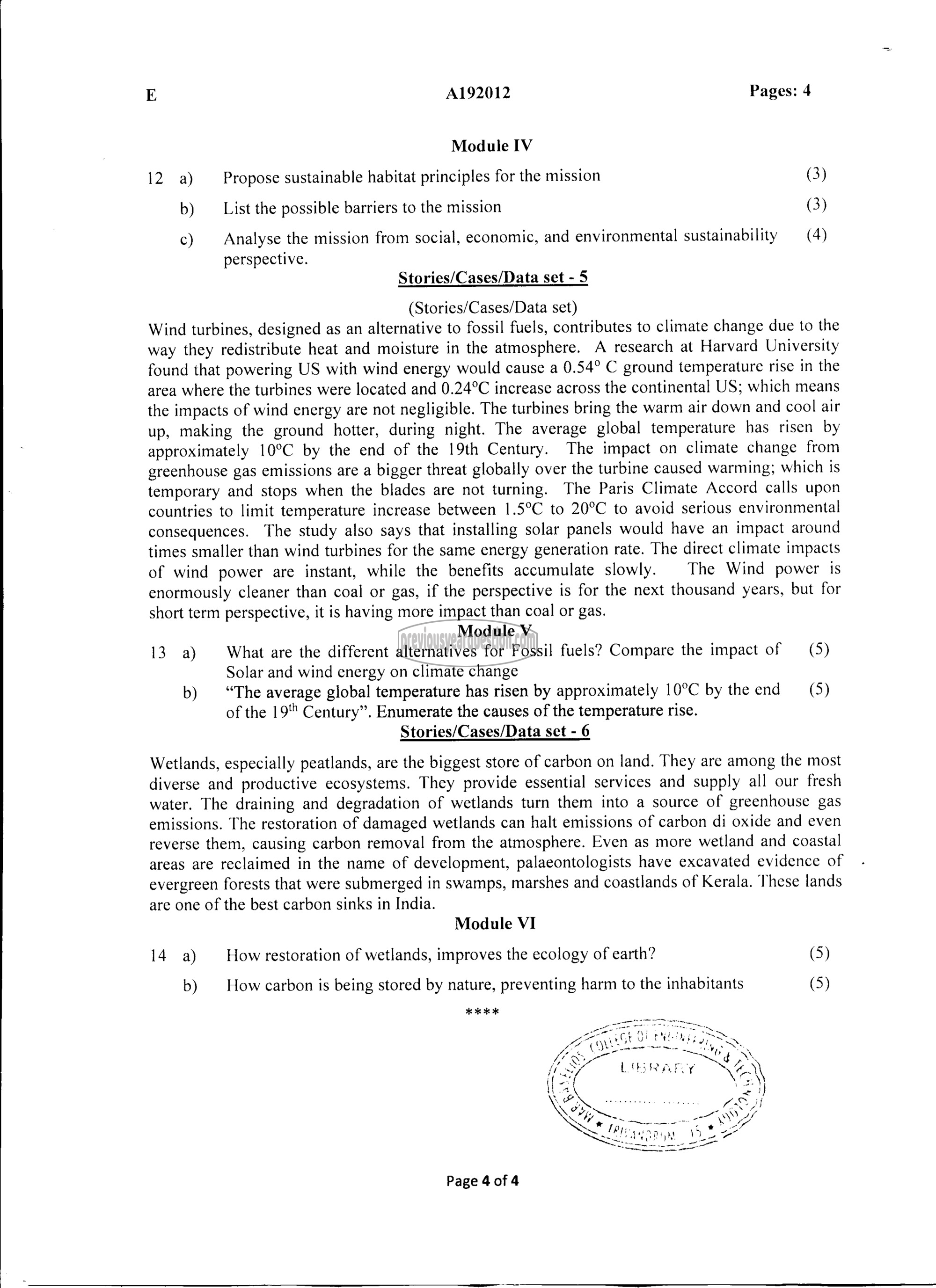APJ ABDUL KALAM TECHNOLOGICAL UNIVERSITY Previous Years Question Paper & Answer
Semester : S1 and S2
Subject : INTRODUCTION TO SUSTAINABLE ENGINEERING
Year : 2019
Term : DECEMBER
Branch : MECHANICAL ENGINEERING
Scheme : 2015 Full Time
Course Code : BE 103
Page:4
E A192012 Pages: 4
Module IV
12 a) [100080 sustainable habitat principles for the mission (3)
b) 15 the possible barriers to the mission (3)
c) Analyse the mission from social, economic, and environmental sustainability (4)
perspective.
Stories/Cases/Data set - 5
(Stories/Cases/Data set)
Wind turbines, designed as an alternative to fossil fuels, contributes to climate change due to the
way they redistribute heat and moisture in the atmosphere. A research at Harvard University
found that powering US with wind energy would cause a 0.54° C ground temperature rise in the
area where the turbines were located and 0.24°C increase across the continental US; which means
the impacts of wind energy are not negligible. The turbines bring the warm air down and cool air
up, making the ground hotter, during night. The average global temperature has risen by
approximately 10°C by the end of the 19th Century. The impact on climate change from
greenhouse gas emissions are a bigger threat globally over the turbine caused warming; which is
temporary and stops when the blades are not turning. The Paris Climate Accord calls upon
countries to limit temperature increase between 1.5°C to 20°C to avoid serious environmental
consequences. The study also says that installing solar panels would have an impact around
times smaller than wind turbines for the same energy generation rate. The direct climate impacts
of wind power are instant, while the benefits accumulate slowly. The Wind power is
enormously cleaner than coal or gas, if the perspective is for the next thousand years, but for
short term perspective, it is having more impact than coal or gas.
Module V
13 8) | What are the different alternatives for Fossil fuels? Compare the impact of (5)
Solar and wind energy on climate change
b) “The average global temperature has risen by approximately 10°C by the end (5)
of the 19% Century”. Enumerate the causes of the temperature rise.
Stories/Cases/Data set - 6
Wetlands, especially peatlands, are the biggest store of carbon on land. They are among the most
diverse and productive ecosystems. They provide essential services and supply all our fresh
water. The draining and degradation of wetlands turn them into a source of greenhouse gas
emissions. The restoration of damaged wetlands can halt emissions of carbon di oxide and even
reverse them, causing carbon removal from the atmosphere. Even as more wetland and coastal
areas are reclaimed in the name of development, palaeontologists have excavated evidence of
evergreen forests that were submerged in swamps, marshes and coastlands of Kerala. These lands
are one of the best carbon sinks in India.
Module VI
14 a) Howrestoration of wetlands, improves the ecology of earth? (5)
b) | How carbon is being stored by nature, preventing harm to the inhabitants (5)
1311.
Page 4 of 4
